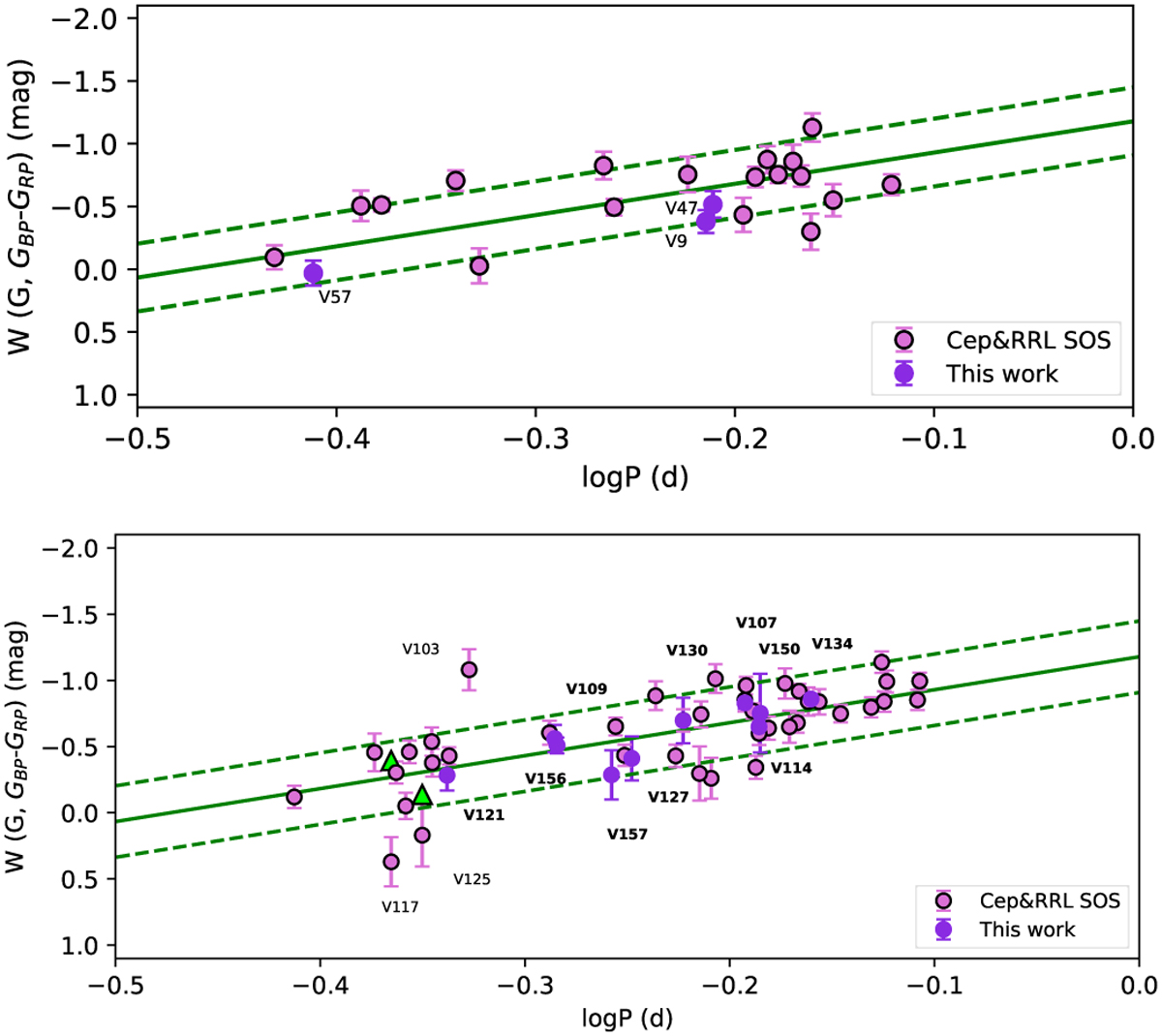Fig. 13

Download original image
Top panel: position of the 20 sources in Table A.2 on the ![]() for the RR Lyrae stars of Garofalo et al. (2022) (green solid line, along with its ± 3σ deviation shown by dashed lines) scaled to the distance modulus of UMi [(m-M)0 = 19.23 mag; Sect. 3.4]. Periods and intensity-averaged G, GBP, and GRP magnitudes are those provided in the vari_rrlyrae table (orchid filled circles), except for V9, V47 and V57 (violet filled circles; see Sects. 5 and 5.1). The RRc stars have been fundamentalised. Bottom panel: same as in the top panel, but for sources listed in Table A.3, RRc and RRd stars have been fundamentalised. For the sources marked by orchid filled circles (37 in total) periods and intensity-averaged G, GBP and GRP magnitudes adopted to compute the Wesenheit magnitudes were taken from the vari_rrlyrae table: the values for V107, V109, V121, V114, V127, V130, V134, V150, V156 and V157 ( violet filled circles) were computed in this work (see text for details). The lime filled triangles show V117 and V125 plotted adopting their GBP and GRP mean magnitudes in the Gaia DR3 main catalogue. V103 lying well above the PWZ relation is likely an RR Lyrae of UMi evolved from the ZAHB.
for the RR Lyrae stars of Garofalo et al. (2022) (green solid line, along with its ± 3σ deviation shown by dashed lines) scaled to the distance modulus of UMi [(m-M)0 = 19.23 mag; Sect. 3.4]. Periods and intensity-averaged G, GBP, and GRP magnitudes are those provided in the vari_rrlyrae table (orchid filled circles), except for V9, V47 and V57 (violet filled circles; see Sects. 5 and 5.1). The RRc stars have been fundamentalised. Bottom panel: same as in the top panel, but for sources listed in Table A.3, RRc and RRd stars have been fundamentalised. For the sources marked by orchid filled circles (37 in total) periods and intensity-averaged G, GBP and GRP magnitudes adopted to compute the Wesenheit magnitudes were taken from the vari_rrlyrae table: the values for V107, V109, V121, V114, V127, V130, V134, V150, V156 and V157 ( violet filled circles) were computed in this work (see text for details). The lime filled triangles show V117 and V125 plotted adopting their GBP and GRP mean magnitudes in the Gaia DR3 main catalogue. V103 lying well above the PWZ relation is likely an RR Lyrae of UMi evolved from the ZAHB.
Current usage metrics show cumulative count of Article Views (full-text article views including HTML views, PDF and ePub downloads, according to the available data) and Abstracts Views on Vision4Press platform.
Data correspond to usage on the plateform after 2015. The current usage metrics is available 48-96 hours after online publication and is updated daily on week days.
Initial download of the metrics may take a while.


